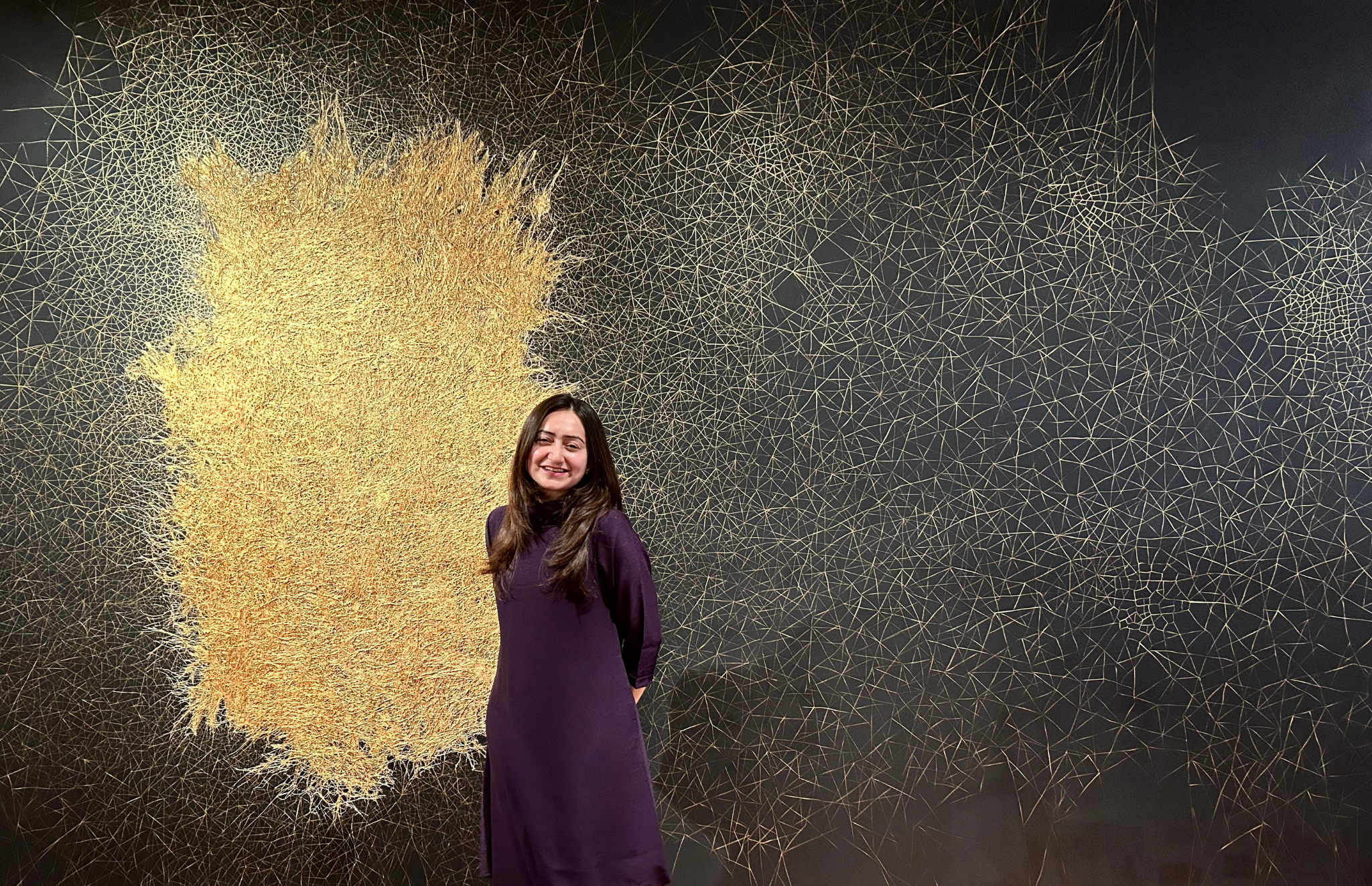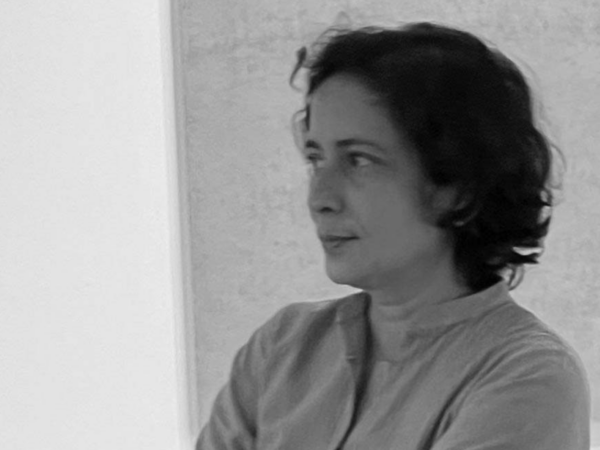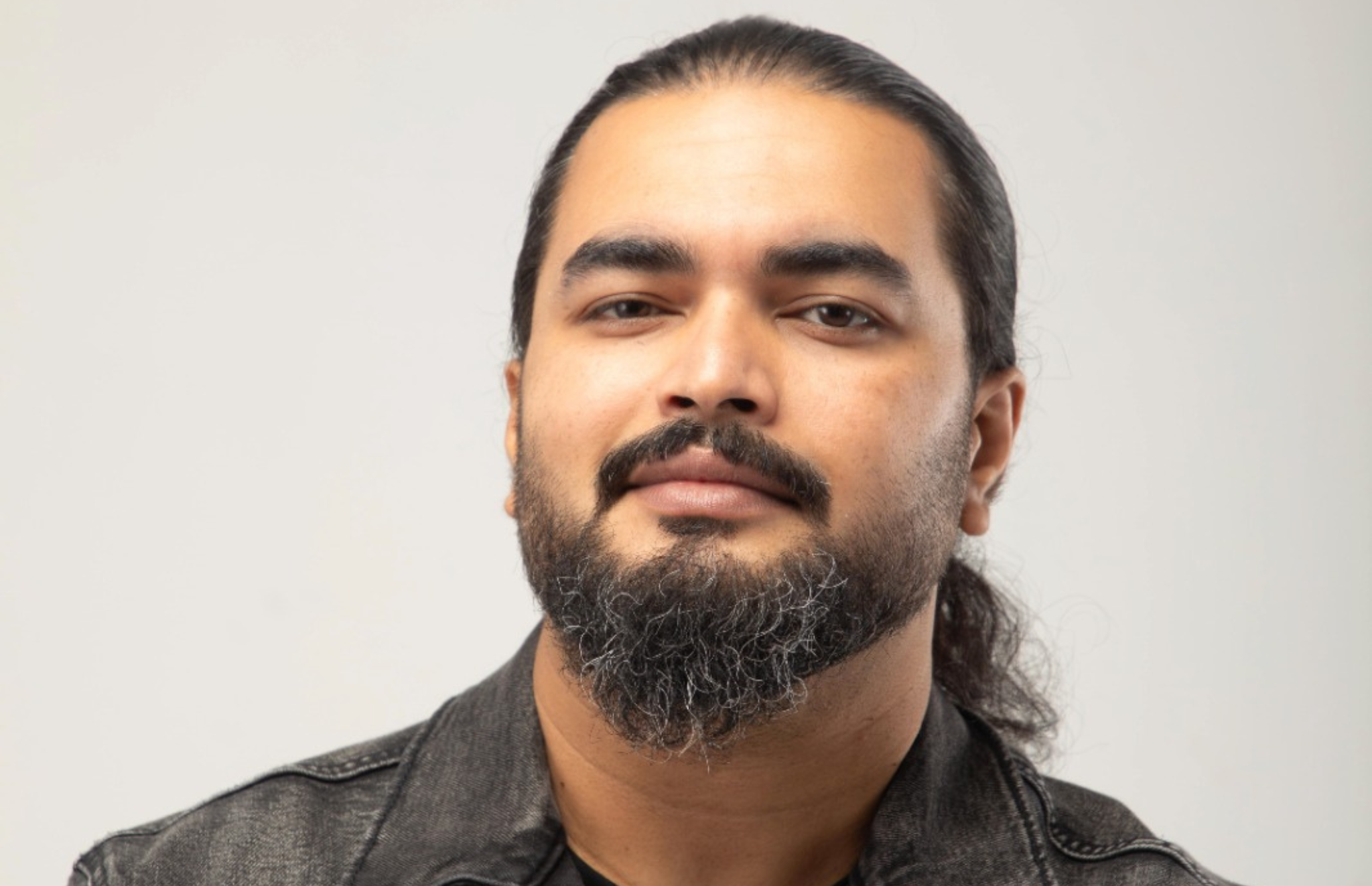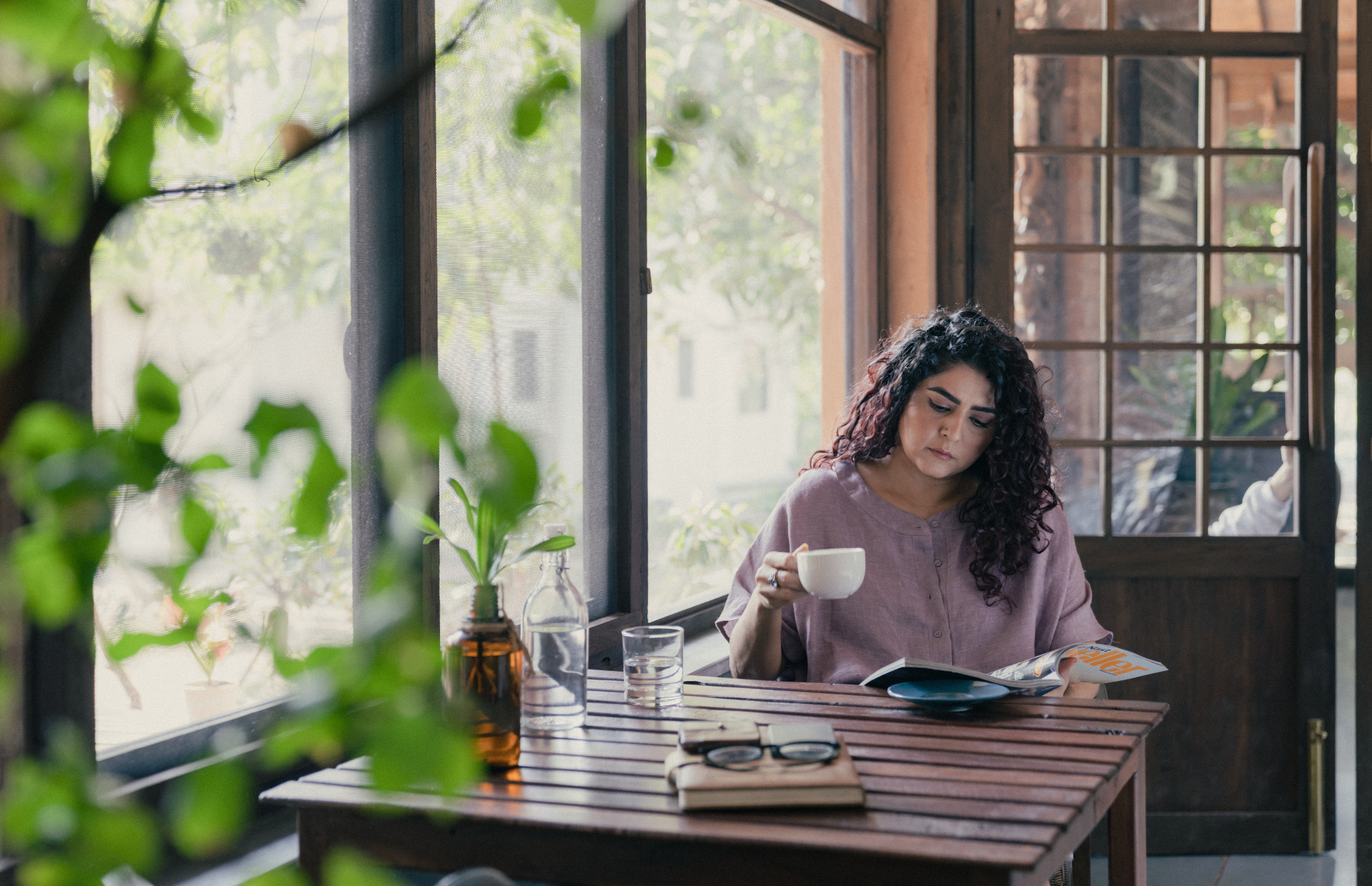Ritesh Meshram was born and raised in Bhilai, a vibrant steel city in Chhattisgarh, India. While still in school, he joined IPTA (Indian People’s Theatre Association), a socio-political theatre group, where he actively participated in set design, creating street posters, and make-up for performances. Although he initially aspired to pursue theatre full-time, his interest gradually shifted towards painting. This led him to enrol in a fine arts degree at Indira Kala Sangeet Vishwa Vidyalaya (IKSVV) in Khairagarh, a former kingdom about 60 kilometres from his hometown. The university, renowned for its diverse range of arts courses, including classical music, dance, fine arts, and folk dance, did not offer theatre studies until after he had graduated. Upon completing his degree, he moved to Mumbai to pursue an art career, where he now lives and works. He is represented by Chemould Prescott Road, Mumbai.
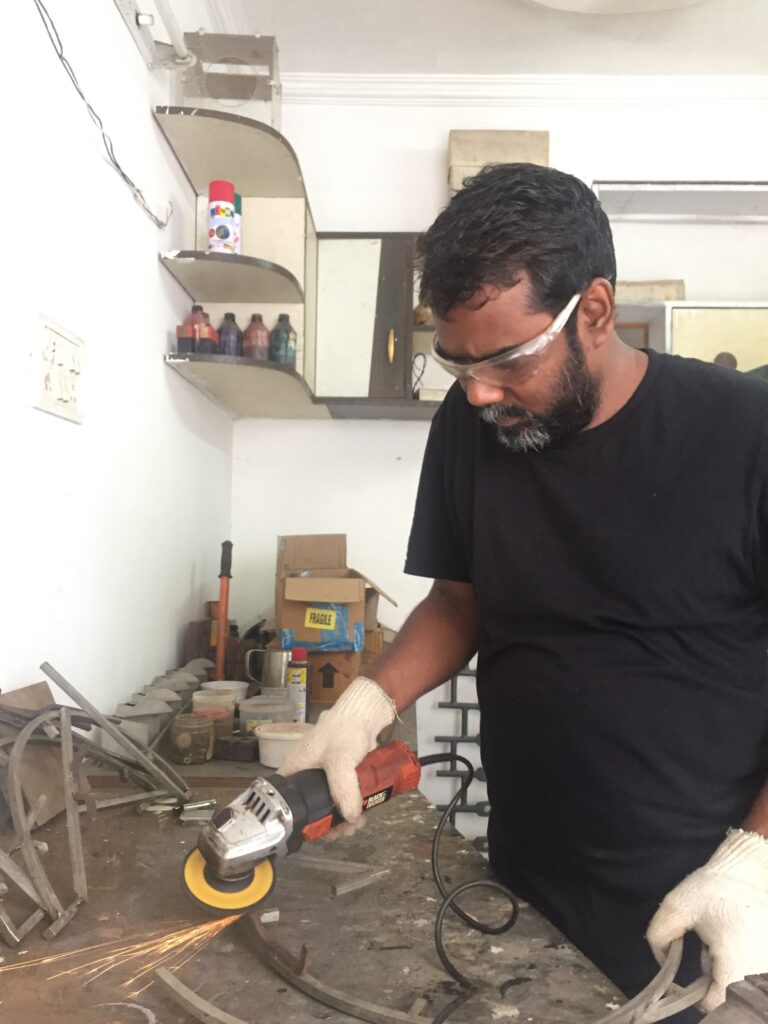
Photo courtesy: Ritesh Meshram
SP: What prompted your early focus on painting, and how did the gradual shift to sculpture come about?
RM: I joined the IPTA (Indian People’s Theatre Association, a socio-political group) at a very young age and spent a significant amount of time doing theatre. Along with other members, I worked on designing sets for plays and creating street posters. It was during this period that my interest in painting began to take shape. Later, I pursued a formal education, completing a BFA in painting from Indira Kala Sangeet Vishwa Vidyalaya (IKSVV) in Khairagarh. I started art school at 23, a bit later than usual. During my studies, I never imagined that I’d eventually take up sculpture.
The art school was surrounded by small villages, and I spent four wonderful years there. It was a beautiful, formative time, and I developed a love for painting landscapes in watercolour. My approach was spontaneous, to the point where I wouldn’t even bother changing the water between paintings. I believe my theatre background played a big role in shaping my artistic mindset, giving me the confidence to take creative risks — skills I later applied to my career as an artist.

Photo courtesy: Ritesh Meshram and Chemould Prescott Road
After graduating, I moved to Mumbai to pursue my art career. I began by creating paintings on paper and sharing them with others. I visited galleries regularly, and one exhibition at the National Gallery of Modern Art (NGMA) in Mumbai had a profound impact on me. The Fluxus show opened my eyes to new ways of thinking about art and creativity. I felt an immediate connection with the works, which resonated with me deeply. Inspired, I decided to explore sculpture, and I needed affordable materials for this new venture.
I started venturing into the streets of Mumbai, seeking out materials, especially discarded objects, that I could transform into something meaningful. Places like Chor Bazaar (a flea market) became treasure troves of inspiration. I was drawn to the idea that objects carry their history and could be reinterpreted to convey new meanings. This led me to start making small structures and sculptures from found objects, a process that I found incredibly empowering.

Photo courtesy: Ritesh Meshram and Chemould Prescott Road
One of my early projects involved creating small assemblages that I exhibited in a group show at Chemould Prescott Road. For these pieces, I used old books I had bought from second-hand bookshops, selecting them based on their titles rather than their content. I purposely avoided reading them to stay detached from their stories and focus solely on the books as objects. After this project, I never returned to painting and fully embraced sculpture as my artistic path.

Photo courtesy: Ritesh Meshram
SP: Your creative practice reflects the ideas of conceptualism and formalism; how do you see these two terms evolve in your art-making?
RM: Materiality and experimentation are integral to my sculpture-making process. While some describe my work as minimal, I don’t see it that way. I aim to create bold, striking structures where the surface — or skin — of the material plays a crucial role. For me, materials can express half of an idea, and at times, they embody the idea itself. I find joy in improvising the forms within my sculptures, often working without a set plan. By painting or buffing the surface, I intentionally manipulate the material’s appearance, adding layers of meaning and interpretation.
In my sculptures, formalism is evident in the careful use of materials, textures, and shapes to create visually compelling works. At the same time, conceptualism emerges through my use of found objects or materials, exploring themes that aren’t always immediately visible. This balance between form and concept allows my sculptures to resonate on multiple levels.

Photo courtesy: Ritesh Meshram
SP: What led you to work with metal, as it appears to be a common material in your practice? Also, could you give a few insights on how your playfulness with metals embraces the artist in you?
RM: Growing up in Bhilai, a steel city in Chhattisgarh, has subtly influenced my artistic choices. Although the connection feels coincidental at times, I believe the environment we come from can shape our aesthetic sensibilities in unexpected ways. My inclination towards working with metal and incorporating it into my assemblage pieces may stem from that exposure, though I love experimenting with various materials.
One day, while working with found objects, I came across two old, painted metal sticks and a painted hammer at a scrap shop. As I played around with these objects in my studio, I noticed the similarity in thickness between the hammer and the sticks. Inspired by this discovery, I spontaneously assembled and welded them together, creating a sculpture in no time. This accidental combination of materials opened up a new direction for me to explore in my work.

Photo courtesy: Ritesh Meshram
I find immense joy in the spontaneity and playfulness of the creative process. When I begin a sculpture, I rarely have a clear image of the final product. Instead, I let experimentation guide me, and that often leads to surprising and meaningful outcomes. As the process unfolds, my focus shifts — from the initial excitement and curiosity to a more deliberate and thoughtful approach. Some of my favourite works are those that came together quickly, without much planning. Overthinking a project can sometimes limit creativity, so I choose to work more intuitively, trusting the process to bring out the best results.
SP: If you had to distil your work to one core idea, what would it be, and what is its significance to you? Are there any artists or movements that you find inspirational and look up to?
RM: The things around me, whether natural or manmade, have always captured my fascination, and my art emerges from observing these surroundings. I encounter people from various walks of life and listen to their stories, which deepen my understanding of the world and myself. Art, in many ways, reflects shared human experiences, and being present, observing, and absorbing these influences is key to my creative process. This approach allows me to live with purpose, connection, and meaning.
However, I don’t believe in storytelling through my art. Instead, I aim to create pieces that stand independently, without the need to convey a specific message or narrative. Abstract art, for me, is a powerful way to express oneself without being tied to predefined forms or stories — it feels like developing a unique visual language. As I’ve mentioned before, the medium and material are crucial to my work. I constantly challenge myself to explore new materials, and how my work visually presents itself is equally important. I don’t believe art should be confined by traditional forms or expectations, so I embrace the unconventional, the unexpected, and the raw.

Photo courtesy: Ritesh Meshram
As an artist, I strive to create something new, though I acknowledge that it’s often a difficult pursuit.
SP: Could you introduce us to the curation of your solo show, ‘In the Womb of the Land,’ 2018? How does your work resonate with ‘found objects’?
RM: The walls are covered in thin lines and shades, forming a geometric pattern that creates a sense of depth and dimensionality. The seven slanted sticks, made of forged mild steel, are painted black, giving them a sleek and modern appearance. Their tilted position introduces a sense of tension and movement. These works are titled In Between the Lines.
On the floor lies a collection of 1×1 foot-sized forged plates, also made of mild steel but deliberately rusted to evoke a weathered, time-worn look, as though they had been buried underground and recently excavated. Placing them on the floor gives a sense of grounding and solidity.
For the show In the Womb of the Land, I created around thirty works, all in mild steel but treated in different ways. Some were forged, while others were painted or rusted. The process of making these sculptures was distinct from my earlier assemblages. As with those earlier pieces, I didn’t plan the works but allowed them to evolve as I went along. Gradually, I realised the vast potential of metal as a medium. I wanted the surface to look hard and uneven, so I collaborated with a blacksmith to forge a piece, and it turned out exactly as I had envisioned. This led me to continue working with metal, designing and creating pieces through hammering, forging, cutting, casting, and soldering.

Photo courtesy: Ritesh Meshram
The works resemble parts of discarded tools picked from scrap shops. The overall effect of the installation leans towards an industrial chic aesthetic, emphasising the raw materials and the rich textures of the metal.
SP: What advice would you pass on to the young emerging talents who are trying to find their artistic voices in the art world?
RM: My message to young emerging talents would be to continue exploring new ideas and strive to create something innovative. They need to maintain their unique perspective and vision, staying true to their artistic voice without being swayed or diluted by external influences.
Image Courtesy: Ritesh Meshram and Chemould Prescott Road
Find out more about the artist and his works: https://riteshmeshram.com/


